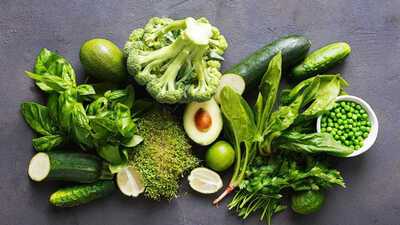If your vegetable garden isn't thriving as expected, despite your best efforts, it might not be a matter of neglect but of nutrition. Just like humans, plants need a balanced diet to grow strong and produce bountiful harvests. Recognizing the early signs of nutrient deficiencies can make all the difference between a struggling garden and a flourishing one.
A study published in the Journal of Plant Nutrition in 2024 provides valuable insights into diagnosing nutrient deficiencies in vegetables . The research outlines common symptoms associated with deficiencies in essential nutrients such as nitrogen, phosphorus, potassium, magnesium, and iron. For instance, nitrogen deficiency often manifests as yellowing of older leaves, while phosphorus deficiency can cause purpling of leaf margins.
Understanding these symptoms is crucial for gardeners and farmers to maintain healthy crops. By regularly monitoring plant health and soil conditions, you can ensure that your vegetables receive the necessary nutrients for optimal growth.
How to identify nutrient deficiencies in vegetables

Nitrogen deficiency
Nitrogen is vital for plant growth, contributing to chlorophyll production and overall plant vigor. A deficiency typically results in yellowing of older leaves, stunted growth, and poor fruit development. To address this, consider applying a balanced fertilizer or incorporating organic matter like compost into the soil.
Phosphorus deficiency
Phosphorus plays a key role in energy transfer and root development. Deficiency symptoms include purpling of leaf margins, delayed maturity, and poor root growth. Solutions involve using phosphorus-rich fertilizers or bone meal to replenish soil levels.
Potassium deficiency
Potassium is essential for water regulation and disease resistance. Deficiency signs are browning or scorching of leaf edges, weak stems, and increased susceptibility to disease. Potassium sulfate or wood ash can be used to correct this imbalance.
Magnesium deficiency

Magnesium is a central component of chlorophyll. A deficiency often presents as interveinal chlorosis (yellowing between veins) on older leaves. Epsom salt (magnesium sulfate) can be applied to the soil to alleviate this issue.
Iron deficiency
Iron is crucial for chlorophyll synthesis. Deficiency leads to yellowing of young leaves while veins remain green. Iron chelates or foliar sprays can be effective treatments.
Calcium deficiency
Calcium is important for cell wall stability and root development. Deficiency symptoms include blossom end rot in fruits and distorted new leaves. Lime or gypsum can be added to the soil to increase calcium levels.
Micronutrient deficiencies
Deficiencies in micronutrients like zinc, boron, and manganese can cause various symptoms such as leaf curling, poor fruit set, and reduced flowering. Foliar sprays containing these micronutrients can help correct these deficiencies.
Identifying and addressing nutrient deficiencies in vegetables is crucial for maintaining healthy crops and ensuring a bountiful harvest. Regular monitoring of plant health and soil conditions, along with timely application of appropriate fertilizers, can prevent and correct these deficiencies.
Disclaimer: This article is for general informational purposes only and is not a substitute for professional medical advice, diagnosis, or treatment. Always seek the guidance of a qualified healthcare provider regarding any medical condition or lifestyle change.
Also read| 7 health benefits of soup and why to eat more this winter
A study published in the Journal of Plant Nutrition in 2024 provides valuable insights into diagnosing nutrient deficiencies in vegetables . The research outlines common symptoms associated with deficiencies in essential nutrients such as nitrogen, phosphorus, potassium, magnesium, and iron. For instance, nitrogen deficiency often manifests as yellowing of older leaves, while phosphorus deficiency can cause purpling of leaf margins.
Understanding these symptoms is crucial for gardeners and farmers to maintain healthy crops. By regularly monitoring plant health and soil conditions, you can ensure that your vegetables receive the necessary nutrients for optimal growth.
How to identify nutrient deficiencies in vegetables
Nitrogen deficiency
Nitrogen is vital for plant growth, contributing to chlorophyll production and overall plant vigor. A deficiency typically results in yellowing of older leaves, stunted growth, and poor fruit development. To address this, consider applying a balanced fertilizer or incorporating organic matter like compost into the soil.
Phosphorus deficiency
Phosphorus plays a key role in energy transfer and root development. Deficiency symptoms include purpling of leaf margins, delayed maturity, and poor root growth. Solutions involve using phosphorus-rich fertilizers or bone meal to replenish soil levels.
Potassium deficiency
Potassium is essential for water regulation and disease resistance. Deficiency signs are browning or scorching of leaf edges, weak stems, and increased susceptibility to disease. Potassium sulfate or wood ash can be used to correct this imbalance.
Magnesium deficiency
Magnesium is a central component of chlorophyll. A deficiency often presents as interveinal chlorosis (yellowing between veins) on older leaves. Epsom salt (magnesium sulfate) can be applied to the soil to alleviate this issue.
Iron deficiency
Iron is crucial for chlorophyll synthesis. Deficiency leads to yellowing of young leaves while veins remain green. Iron chelates or foliar sprays can be effective treatments.
Calcium deficiency
Calcium is important for cell wall stability and root development. Deficiency symptoms include blossom end rot in fruits and distorted new leaves. Lime or gypsum can be added to the soil to increase calcium levels.
Micronutrient deficiencies
Deficiencies in micronutrients like zinc, boron, and manganese can cause various symptoms such as leaf curling, poor fruit set, and reduced flowering. Foliar sprays containing these micronutrients can help correct these deficiencies.
Identifying and addressing nutrient deficiencies in vegetables is crucial for maintaining healthy crops and ensuring a bountiful harvest. Regular monitoring of plant health and soil conditions, along with timely application of appropriate fertilizers, can prevent and correct these deficiencies.
Disclaimer: This article is for general informational purposes only and is not a substitute for professional medical advice, diagnosis, or treatment. Always seek the guidance of a qualified healthcare provider regarding any medical condition or lifestyle change.
Also read| 7 health benefits of soup and why to eat more this winter
You may also like

Who is Miriam Adelson? Trump praises mega-donor's influence on US policy towards Israel

Return to Paradise star admits 'it's overwhelming' as she hints at crossover

Supreme Court junks plea for probe into 'vote chori' charge, says approach EC

World leaders throw their weight behind Gaza ceasefire deal

Coronation Street fans say same thing as star lands new contract on ITV soap






